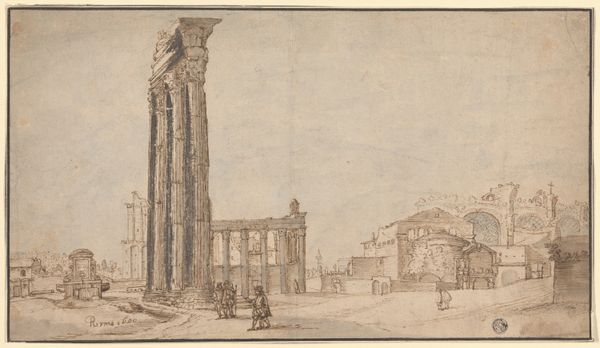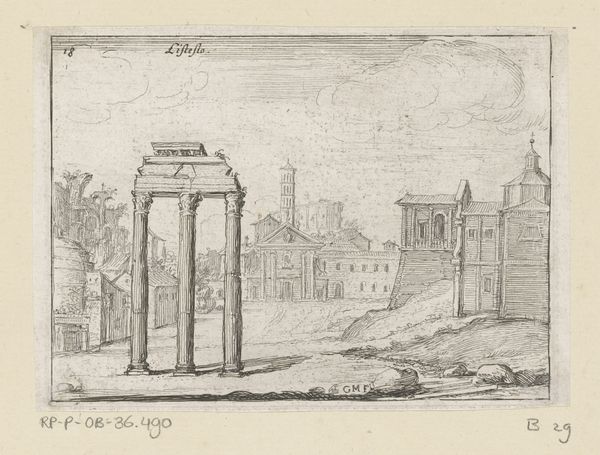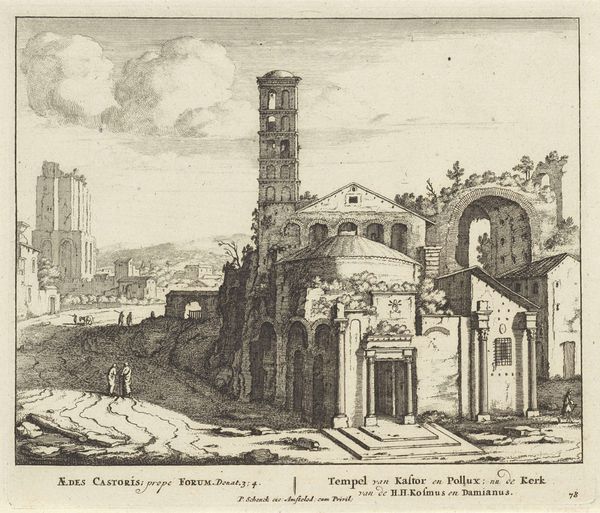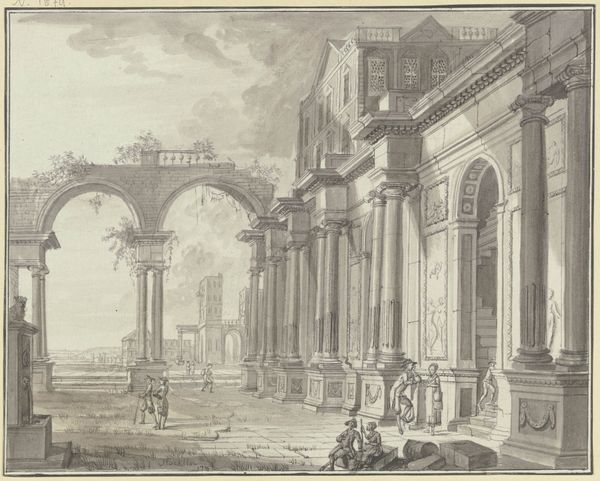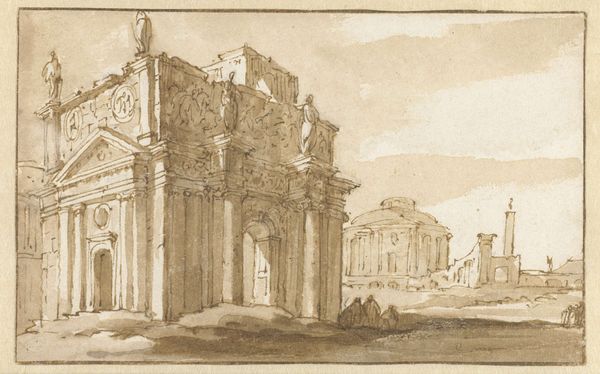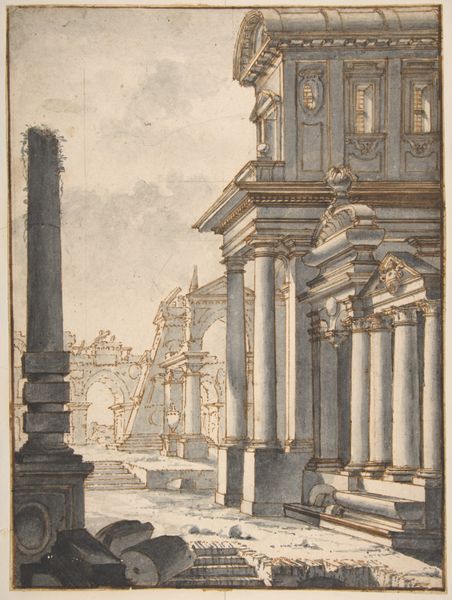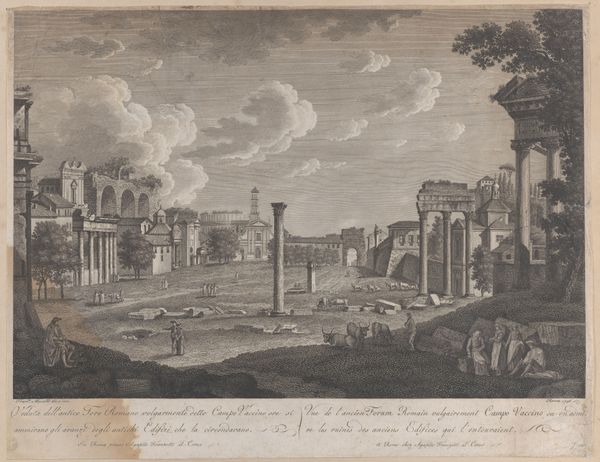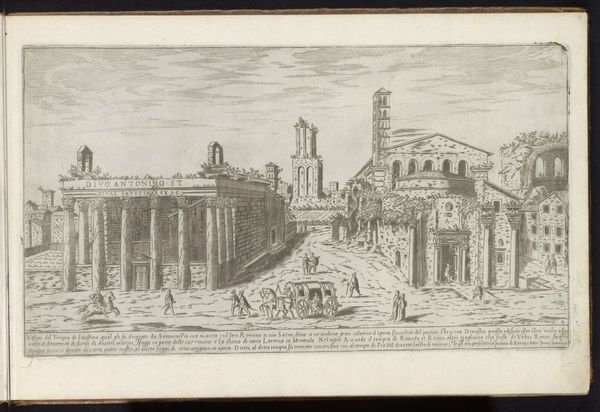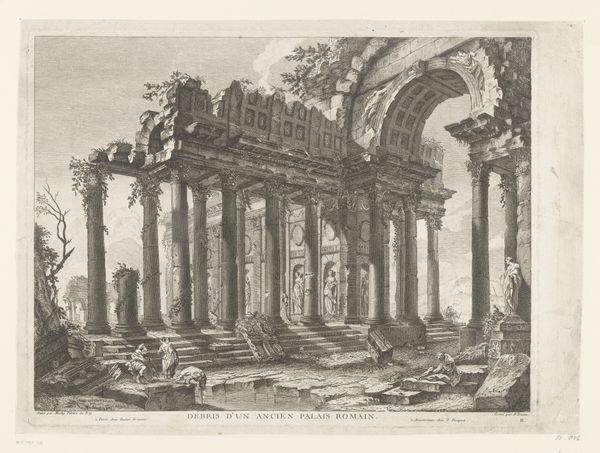
drawing, print, architecture
#
drawing
#
baroque
# print
#
landscape
#
ancient-mediterranean
#
architecture
Dimensions: sheet: 5 1/2 x 7 5/16 in. (14 x 18.5 cm)
Copyright: Public Domain
Curator: Here we have an anonymous 17th-century rendering of the "Roman Forum", now residing here at the Metropolitan Museum of Art. It appears to be a print, likely derived from a drawing. Editor: My immediate reaction is one of melancholic grandeur. The ruins, depicted in sepia tones, evoke a powerful sense of the passage of time and lost glory. Curator: Indeed. Note how the artist utilizes line and perspective to create depth, drawing our eye through the remnants of classical architecture. The deliberate arrangement of the columns, arches, and receding structures creates a dynamic visual rhythm, a spatial harmony. Editor: The ruined columns act as potent symbols. Broken but still standing, they embody both the triumph and fragility of civilization, mirroring the cyclical nature of power and decay in the history of empires. Curator: Quite. Furthermore, observe the application of chiaroscuro – the subtle gradations of light and shadow give form and texture to the stones, highlighting their aged surfaces and conveying their solidity. Editor: The figures populating the foreground also deserve attention. They seem dwarfed by the scale of the ruins, perhaps symbolic of humanity's transient existence against the backdrop of history. We are left grappling with themes of mortality, legacy, and the enduring power of cultural memory. Curator: Yes, the proportional relationship contributes to the emotional resonance. However, from a strictly formal standpoint, observe how the artist has used cross-hatching in certain areas, creating areas of darker tonal weight against the smooth surfaces of the vellum, giving structure. Editor: Ultimately, this print transcends a mere depiction of the Forum. It is a meditation on history, inviting us to contemplate the cyclical dance between creation and destruction. The ruins evoke an awareness of the continuity and change over time. Curator: Precisely. It is through an examination of its components that the work succeeds: its form, tone and carefully structured rendering of architectural and spatial depth provide context to our understanding. Editor: Its emotional resonance will undoubtedly endure, echoing through the corridors of our collective consciousness, shaping how we view the world.
Comments
No comments
Be the first to comment and join the conversation on the ultimate creative platform.
